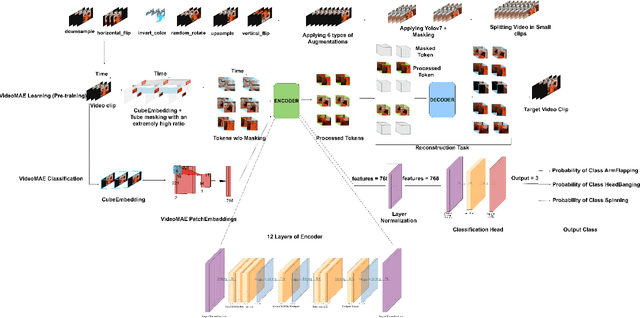Advanced Gesture Recognition in Autism: Integrating YOLOv7, Video Augmentation and VideoMAE for Video Analysis
Paper and Code
Oct 12, 2024



Deep learning and advancements in contactless sensors have significantly enhanced our ability to understand complex human activities in healthcare settings. In particular, deep learning models utilizing computer vision have been developed to enable detailed analysis of human gesture recognition, especially repetitive gestures which are commonly observed behaviors in children with autism. This research work aims to identify repetitive behaviors indicative of autism by analyzing videos captured in natural settings as children engage in daily activities. The focus is on accurately categorizing real-time repetitive gestures such as spinning, head banging, and arm flapping. To this end, we utilize the publicly accessible Self-Stimulatory Behavior Dataset (SSBD) to classify these stereotypical movements. A key component of the proposed methodology is the use of \textbf{VideoMAE}, a model designed to improve both spatial and temporal analysis of video data through a masking and reconstruction mechanism. This model significantly outperformed traditional methods, achieving an accuracy of 97.7\%, a 14.7\% improvement over the previous state-of-the-art.
 Add to Chrome
Add to Chrome Add to Firefox
Add to Firefox Add to Edge
Add to Edge